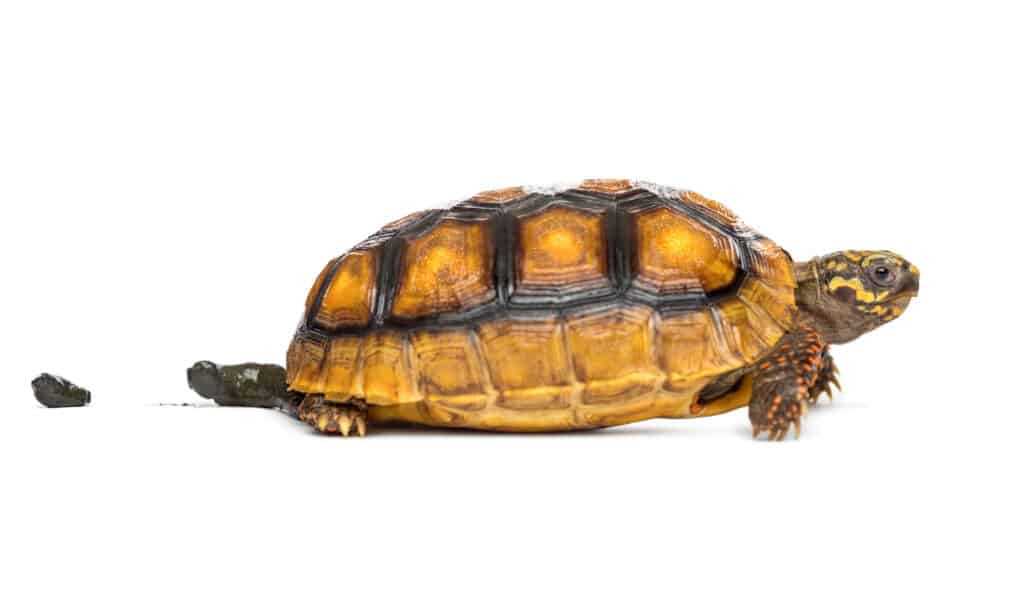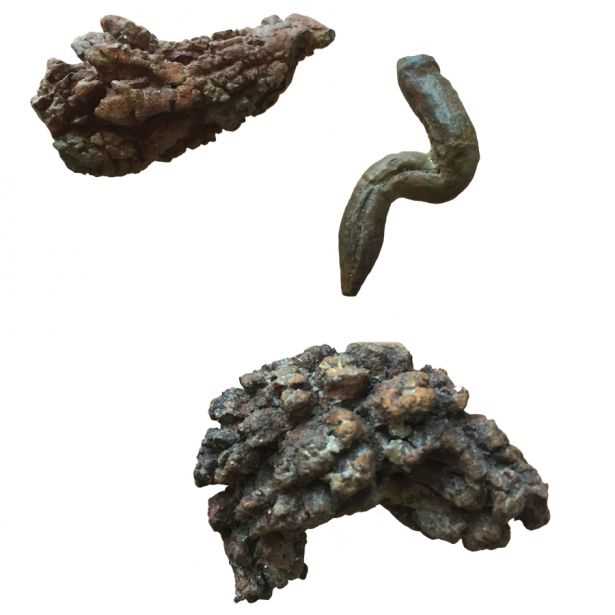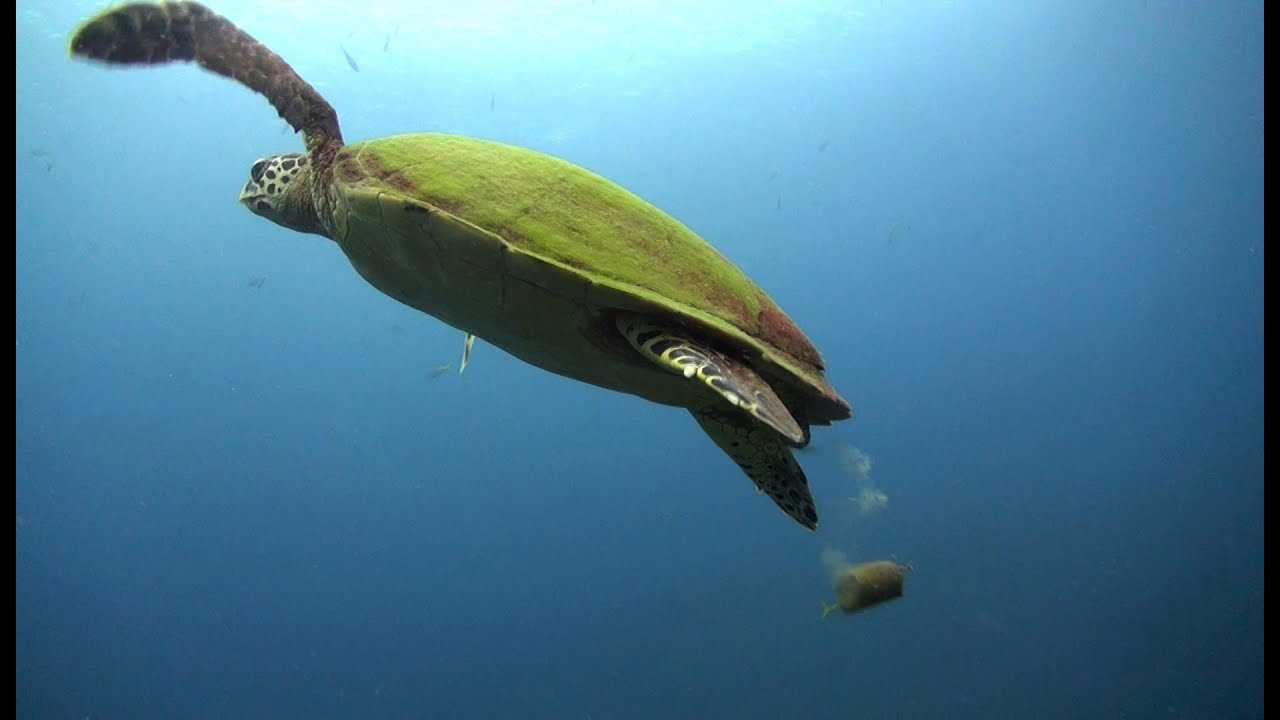So, what does turtle poop look like? Turtle poop can vary in appearance depending on the species and diet of the turtle. Generally, turtle poop is small and cylindrical in shape, similar to a sausage. It is often dark brown or black in color, but can also be greenish or even reddish, depending on what the turtle has been eating.
So the next time you come across some turtle poop, take a moment to observe its appearance and characteristics. You may be surprised at what you can learn just by looking at something as simple as turtle poop!
What Does Turtle Poop Look Like?
However, it is essential to note that turtle poop can vary significantly among different species. For example, sea turtles may have a more liquid-like poop due to their marine diet, while land turtles’ poop is typically firmer and more solid.
Identifying Turtle Poop
Identifying turtle poop can be helpful when monitoring the health of turtles in the wild or in captivity. One way to recognize turtle poop is by its shape and consistency. As mentioned earlier, turtle poop is usually tubular, somewhat similar to that of other reptiles.
Another way to identify turtle poop is by its color. The color can give clues about the turtle’s diet and overall well-being. For example, if the poop is green, it may indicate a predominantly herbivorous diet, while brown poop suggests a diet that includes more protein and animal matter.
Different Types of Turtle Poop
There are various types of turtle poop that you may come across, depending on the species and their specific characteristics. Some turtles may produce more pellet-like poop, while others may have a more elongated form. The texture can range from soft to firm, depending on the turtle’s diet and digestion process.
Additionally, turtle poop can be categorized as either fresh or old. Fresh poop is moist and has a distinct odor, while old poop may be drier and less odorous. By observing the different types of turtle poop, experts can gather valuable information about the turtle’s diet, habits, and overall health.
Analyzing Turtle Poop: What the Color Reveals
The color of turtle poop can reveal crucial information about the turtle’s diet and health. As mentioned earlier, green poop suggests a herbivorous diet, consisting of plants and algae. On the other hand, brown or darker poop may indicate a more omnivorous or carnivorous diet, which includes insects, small animals, or fish.
Changes in poop color can also indicate possible health issues. For instance, if the poop suddenly turns reddish, it may suggest bleeding in the digestive system. If you notice any significant changes in color, it is essential to consult a veterinarian specialized in reptiles for a proper diagnosis and treatment.
Identifying Turtle Poop: What to Look For
First and foremost, turtle poop is typically small and cylindrical in shape. It is usually a dark brown or black color, although the specific shade can vary depending on the turtle’s diet and species.
One important factor to pay attention to is the consistency of the poop. Healthy turtle poop is firm and well-formed, resembling a small log. If you notice loose or watery stools, it may indicate digestive issues or a potential illness.
Another aspect to consider is the smell. While turtle poop does have an odor, it should not be overwhelmingly strong or foul. If you notice an unusually pungent smell, it could be a sign of infection or an underlying health problem.
It is also worth mentioning that the size of the poop can provide valuable information. Larger turtle species tend to produce larger droppings, while smaller turtles leave behind smaller droppings. Keep this in mind when trying to identify the source of the poop.
Lastly, consider the location where the poop is found. Turtles are amphibious creatures, so it is common to find their droppings both in water and on land. If you come across turtle poop near a freshwater source, it is a good indication that turtles are present in the area.
Different Types of Turtle Poop: An Overview
| Type | Appearance | Description |
|---|---|---|
| Firm and well-formed | Dark brown or green | This type of turtle poop is the most common and indicates a healthy diet consisting of primarily plant matter. It is firm and well-formed, often shaped like small cylinders or pellets. |
| Soft and mushy | Light brown or green | If your turtle’s poop is soft and mushy, it may suggest an imbalance in their diet or the presence of gastrointestinal issues. It could be a sign of overconsumption of protein-rich foods or inadequate fiber intake. |
| Watery or runny | Yellow or brown | Turtle poop that appears watery or runny may indicate a high water content in their diet or the presence of an underlying health issue. It could be a result of excessive hydration or an infection. |
| White and urate-rich | White or chalky | The presence of white or chalky urate in turtle poop is normal and signifies the excretion of uric acid, a waste product of protein metabolism. This component is typically expelled separately from the fecal matter. |
| Abnormal color | Unusual colors | If you notice any abnormal colors in your turtle’s poop, such as red, black, or orange, it could indicate the presence of blood, parasites, or a specific health issue. Prompt veterinary attention should be sought to identify and address the underlying cause. |
What Does Turtle Poop Look Like? A Visual Guide

Why is Turtle Poop Important?
Turtle poop serves as a key indicator of their overall health. By examining their feces, you can identify any potential health issues early on. Additionally, studying turtle poop can help researchers and veterinarians understand their diet, habitat, and the impact they have on their environment.
What Does Turtle Poop Look Like?
Turtle poop typically varies in appearance depending on the species and their diet. It is crucial to recognize normal turtle poop to differentiate it from abnormal or unhealthy feces.
Here are some common characteristics of turtle poop:
| Appearance | Description |
|---|---|
| Size | Turtle poop is usually small and compact. The size can range from a few centimeters to a few inches, depending on the turtle’s size. |
| Shape | Turtle poop is typically cylindrical or oval-shaped. It may appear slightly tapered at one end. |
| Color | The color of turtle poop can vary depending on their diet. It can range from brown or black to green or even white. |
| Consistency | Healthy turtle poop is firm but not overly hard. It should hold its shape but should not be dry or crumbly. |
| Content | You may find small undigested food particles, such as pieces of plants or insects, in turtle poop. These undigested materials provide insights into their diet. |
Interpreting Turtle Poop
By observing the characteristics mentioned above, you can gain valuable information about a turtle’s health. For example, if the color of the poop is abnormal, such as red or bloody, it could indicate an internal injury or infection.
Similarly, changes in consistency or the presence of mucus can indicate digestive problems or the presence of parasites. It’s essential to monitor any significant changes in their feces and consult a veterinarian if necessary.
Turtle Poop vs. Tortoise Poop: Spotting the Differences
Shape and Size
Turtle poop tends to be smaller and more rounded in shape compared to tortoise poop. This is because turtles primarily eat aquatic plants and small invertebrates, which result in a more compact and well-formed stool. On the other hand, tortoises have a primarily herbivorous diet, consisting of grasses and leafy greens, which leads to bulkier and elongated feces.
Texture and Consistency
Color and Odor
The color of turtle poop can vary depending on their diet and health. Generally, it ranges from brown to greenish-brown. On the other hand, the color of tortoise poop tends to be darker, often appearing as a darker shade of brown. As for the odor, both types of poop may have a slight unpleasant smell, but it is usually not overly offensive.
Location and Frequency
The Role of Turtle Poop in Aquatic Ecosystems
What Does Turtle Poop Look Like?
Turtle poop can vary in appearance depending on the species and diet of the turtle. Generally, it is cylindrical in shape and has a dark brown or greenish color. The size of the poop can range from small pellets to larger, coiled deposits. In some cases, you may even find undigested food particles or the remains of shells in the poop.
The Importance of Turtle Poop
Turtle poop serves several important functions in aquatic ecosystems. Firstly, it acts as a nutrient source for various organisms, such as algae, plants, and small invertebrates. The waste excreted by turtles contains essential nutrients, such as nitrogen and phosphorus, which are vital for the growth and health of these organisms.
In addition to providing nutrients, turtle poop also helps to distribute and cycle these nutrients throughout the ecosystem. As turtles swim and forage, they leave behind fecal matter in different areas of their habitat. This distribution helps to ensure that nutrients are not concentrated in one area, but rather spread out, benefiting a wider range of organisms.
Turtle Poop and Habitat Maintenance
Turtle poop also plays a role in the maintenance of aquatic habitats. As turtles deposit their waste, they enhance the structure of the habitat by contributing to the formation of organic matter on the sediment surface. This organic matter provides a substrate for the growth of microorganisms, which in turn support the food web of the ecosystem.
Furthermore, turtle poop can create habitats for various organisms. The fecal matter can provide shelter and food for certain invertebrates, such as insect larvae and small crustaceans. These organisms, in turn, serve as an important food source for higher trophic levels, including fish and other reptiles.
The Balance of Turtle Poop
Turtle Poop and Environmental Impact: What You Should Know
First and foremost, turtle poop plays a crucial role in maintaining the balance of aquatic ecosystems. As turtles are an integral part of these ecosystems, their poop serves as a vital nutrient source for various organisms.
So, what does turtle poop look like? Well, turtle poop typically appears in the form of small, cylindrical droppings. The color of the poop can vary depending on the turtle’s diet and the specific species. For instance, herbivorous turtles tend to produce dark green or brown poop, while carnivorous turtles may have lighter-colored or white poop.
By analyzing the color of turtle poop, researchers and conservationists can gain insights into the health and dietary habits of turtle populations. Dark, well-formed poop indicates a healthy diet, while abnormal colors or irregularities in poop consistency may indicate health issues or dietary imbalances.
However, excessive turtle poop can lead to imbalances in the ecosystem. Too much nitrogen and phosphorus can cause excessive algal growth, leading to algal blooms. These blooms can deplete oxygen levels in the water, creating harmful conditions for aquatic organisms.
Furthermore, turtle poop may also contain bacteria and parasites that can potentially affect water quality and other organisms. It is crucial to handle turtle poop properly and dispose of it in a responsible manner to minimize any potential negative impacts on the environment.
Turtle Poop as a Health Indicator: What Veterinarians Say
Turtle poop may not be the most glamorous topic of conversation, but it can provide valuable insights into a turtle’s health. Veterinarians often analyze the characteristics of turtle poop to determine if there are any underlying health issues that need attention.
What Does Healthy Turtle Poop Look Like?
Healthy turtle poop typically has a firm, cylindrical shape and a brown or greenish-brown color. The consistency is similar to that of Play-Doh, making it easy for the turtle to expel. It should not be excessively hard or runny. If the poop is too watery or contains mucus, it could be a sign of digestive problems or an infection.
In addition to the appearance and consistency, veterinarians also pay attention to the smell of turtle poop. Healthy poop should have a mild odor that is not overly offensive. A strong, foul smell could indicate a bacterial or parasitic infection.
What Can Turtle Poop Reveal About a Turtle’s Health?
By examining the characteristics of turtle poop, veterinarians can gather important information about a turtle’s overall health. In addition to the appearance and smell, they look for the presence of undigested food, blood, or abnormal colors.
If a turtle’s poop contains undigested food, it may suggest that the turtle is not properly digesting its food or that it is consuming items that it shouldn’t. This could indicate a gastrointestinal issue or a dietary problem.
The presence of blood in turtle poop is a cause for concern and should be addressed by a veterinarian. It could indicate an injury, infection, or internal bleeding.
How Can Turtle Poop Help with Diagnosis and Treatment?
Veterinarians use turtle poop as a diagnostic tool to identify underlying health issues. By analyzing the characteristics of the poop, they can narrow down potential causes and develop an appropriate treatment plan.
In some cases, veterinarians may request a sample of the turtle’s poop for further analysis in a laboratory. This can help identify specific bacteria, parasites, or other pathogens that may be causing the turtle’s health problems.
Conclusion
The Importance of Proper Turtle Poop Disposal
1. Preventing Water Pollution:
Turtle poop, like any other waste, contains certain chemicals and nutrients that can be harmful if they enter water bodies in excessive amounts. When not disposed of properly, turtle poop can contribute to water pollution, leading to an imbalance in the ecosystem. Excessive nutrient levels in the water can cause algae blooms, deplete oxygen levels, and harm other aquatic organisms. Therefore, it is crucial to dispose of turtle poop in a way that prevents it from contaminating water sources.
2. Preserving Habitat Quality:
Improper disposal of turtle poop can also negatively impact the overall quality of the habitat. Accumulation of waste can lead to the degradation of water quality, making it unsuitable for various species of plants and animals. By disposing of turtle poop correctly, you can help maintain a healthy habitat for turtles and other aquatic organisms.
3. Preventing Spread of Diseases:
Just like any other animal waste, turtle poop can carry bacteria and parasites that can cause diseases. Improper disposal of turtle poop can increase the risk of these pathogens spreading to other turtles or even humans. By properly disposing of turtle poop, you can reduce the chances of diseases spreading and ensure the well-being of turtles and other animals in the ecosystem.
4. Promoting Public Health:
Conclusion
Proper disposal of turtle poop plays a vital role in maintaining clean and healthy environments, preventing water pollution, preserving habitat quality, preventing the spread of diseases, and promoting public health. It is essential to be responsible in handling and disposing of turtle poop to ensure the well-being of turtles, other aquatic organisms, and humans alike.
Turtle Poop in Pictures: Why It Matters
The Importance of Visual Evidence
Visual evidence, such as pictures of turtle poop, provides researchers with a concrete record of the species’ waste. By examining the size, shape, and consistency of the feces, experts can determine the overall health of the animal. For instance, dry or irregularly shaped poop may indicate dehydration or an unhealthy diet, while consistently watery or loose feces can point to gastrointestinal issues.
Additionally, pictures of turtle poop can help identify parasites or other pathogens present in the feces. These microscopic organisms can cause diseases that may affect the turtle’s health and survival. By analyzing the pictures, researchers can collaborate with veterinarians to develop appropriate treatments or preventive measures to ensure the well-being of the turtles.
Monitoring Diet and Environmental Impact

Furthermore, analyzing turtle poop in pictures can help assess the environmental impact of pollution and habitat degradation on these reptiles. Researchers can look for signs of plastic ingestion or other harmful substances that may be affecting the health of the turtles. This data can then be used to advocate for conservation efforts and raise awareness about the need to protect these vulnerable species.
Contributing to Scientific Knowledge


I’m Lena Adams—a product of an unconventional upbringing in the African wilderness. My father, a daring explorer of African wildlife, sparked my fascination with reptiles, a passion that intertwined with the tragic loss of my mother during an expedition, leaving an indelible mark on my life. Driven to understand the creatures that captivated my parents, I embarked on my journey, sharing insights about reptiles, frogs, and lizards on my website. Through my explorations and conservation efforts, I honour my family’s legacy while seeking connections—to the creatures, nature, and the mother whose presence I yearn to understand.
